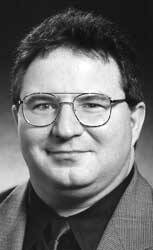With less than six months to go before the 2012 November elections, two results are sadly certain: first, the voting public will be the most ideologically divided ever; second, the 113th Congress (2013–14) will be the most partisan and polarized ever.
Between 1972 and 2008, the percentage of Republican voters who self-identified as “conservative” rose by about 41 percent, and the percentage of Democratic voters that self-identified as “liberal” rose by about 44 percent. Meanwhile, ever more citizens with more moderate views, politically less attentive people and 18- to 29-year-olds either failed to register to vote or voted at anemic rates relative to more ideologically driven citizens.
In national election after national election, voter turnout among independents and other more centrist voters has been lower than voter turnout among their partisan and hyper-partisan neighbors. As Alan I. Abramowitz of Emory University writes in a newly released book, The Polarized Public? Why American Government Is So Dysfunctional, “Republicans have gone from a predominantly conservative electoral base to an overwhelmingly conservative electoral base,” and while “conservative Democrats are not as rare as liberal Republicans,” the “Democratic electoral base has a decidedly liberal tilt today.”
As each party’s electoral base has marched ever farther to the right (Republicans) and ever farther to the left (Democrats), each party’s respective activists and elected leaders have gone still farther to one or the other extreme. Thus, as successive surveys on a wide range of domestic, economic, cultural and foreign policy issues reveal, at every national convention since 1972, Republican delegates were more conservative, and Democratic delegates more liberal, than their party’s rank-and-file voters, and even farther in their respective views from the American public at large.
This electoral polarization did not happen overnight or by accident. In a forthcoming tribute to James Q. Wilson, the award-winning former president of the American Political Science Association who died this past March at the age of 80, the Brookings Institution’s Pietro Nivola highlights one of Wilson’s 17 books, The Amateur Democrat (1961), and recommends that anyone “contemplating the power of ideologues in both the Democratic and Republican parties today” ought to re-read it.
Amen. As Nivola writes, a half-century ago Wilson predicted that the Progressive “idea of the direct primary as the preferred means of nominating candidates,” while breaking the illicit power of urban political machines, would in due course unduly empower “amateur democrats,” ideological activists and elected leaders in each party defined by their “willingness to go down in flames over professed principles, and disdain for politics as the art of the possible.”
Just one recent example is the rise of the Tea Party as a force in Republican primaries. In the aforementioned new book, Abramowitz analyzes the American National Election Survey data from October 2010. Compared with other Republicans, Tea Party Republicans are more than twice as likely to claim a “strong Republican ideology” (45 percent to 21 percent) and also more likely to “dislike Obama” (90 percent to 55 percent), “oppose health care reform” (88 percent to 58 percent) and “oppose clean energy” (81 percent to 32 percent).
The disproportionate influence of “amateur democrats” in each party’s primary election politics has revolutionized and polarized politics on Capitol Hill. In an analysis of “The Polarization of the Congressional Parties,” published in March 2012, the political scientists Howard Rosenthal and Keith Poole use various measures to track the level of polarization in Congress dating back to 1879. “Polarization in the House and Senate,” they conclude, “is now at the highest level since the end of Reconstruction.”
Rosenthal and Poole are number-crunching scholars not given to hyperbole. To doubt the reality that they and other experts have now documented beyond a reasonable doubt, or to pretend that only the “other” party is to blame, is to vote for more of the same.
John J. DiIulio JR.








